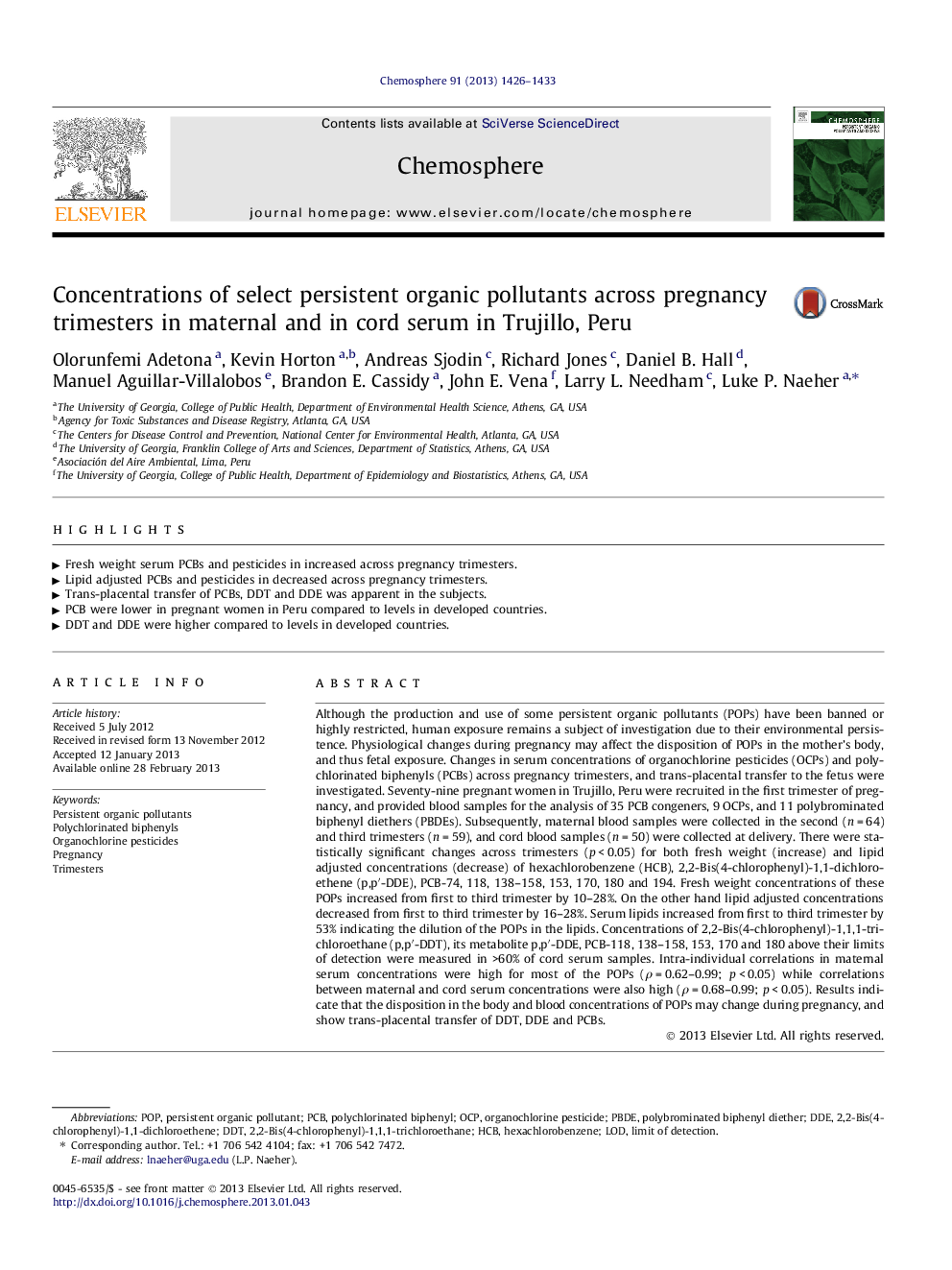| Article ID | Journal | Published Year | Pages | File Type |
|---|---|---|---|---|
| 4409461 | Chemosphere | 2013 | 8 Pages |
Although the production and use of some persistent organic pollutants (POPs) have been banned or highly restricted, human exposure remains a subject of investigation due to their environmental persistence. Physiological changes during pregnancy may affect the disposition of POPs in the mother’s body, and thus fetal exposure. Changes in serum concentrations of organochlorine pesticides (OCPs) and polychlorinated biphenyls (PCBs) across pregnancy trimesters, and trans-placental transfer to the fetus were investigated. Seventy-nine pregnant women in Trujillo, Peru were recruited in the first trimester of pregnancy, and provided blood samples for the analysis of 35 PCB congeners, 9 OCPs, and 11 polybrominated biphenyl diethers (PBDEs). Subsequently, maternal blood samples were collected in the second (n = 64) and third trimesters (n = 59), and cord blood samples (n = 50) were collected at delivery. There were statistically significant changes across trimesters (p < 0.05) for both fresh weight (increase) and lipid adjusted concentrations (decrease) of hexachlorobenzene (HCB), 2,2-Bis(4-chlorophenyl)-1,1-dichloroethene (p,p′-DDE), PCB-74, 118, 138–158, 153, 170, 180 and 194. Fresh weight concentrations of these POPs increased from first to third trimester by 10–28%. On the other hand lipid adjusted concentrations decreased from first to third trimester by 16–28%. Serum lipids increased from first to third trimester by 53% indicating the dilution of the POPs in the lipids. Concentrations of 2,2-Bis(4-chlorophenyl)-1,1,1-trichloroethane (p,p′-DDT), its metabolite p,p′-DDE, PCB-118, 138–158, 153, 170 and 180 above their limits of detection were measured in >60% of cord serum samples. Intra-individual correlations in maternal serum concentrations were high for most of the POPs (ρ = 0.62–0.99; p < 0.05) while correlations between maternal and cord serum concentrations were also high (ρ = 0.68–0.99; p < 0.05). Results indicate that the disposition in the body and blood concentrations of POPs may change during pregnancy, and show trans-placental transfer of DDT, DDE and PCBs.
► Fresh weight serum PCBs and pesticides in increased across pregnancy trimesters. ► Lipid adjusted PCBs and pesticides in decreased across pregnancy trimesters. ► Trans-placental transfer of PCBs, DDT and DDE was apparent in the subjects. ► PCB were lower in pregnant women in Peru compared to levels in developed countries. ► DDT and DDE were higher compared to levels in developed countries.
